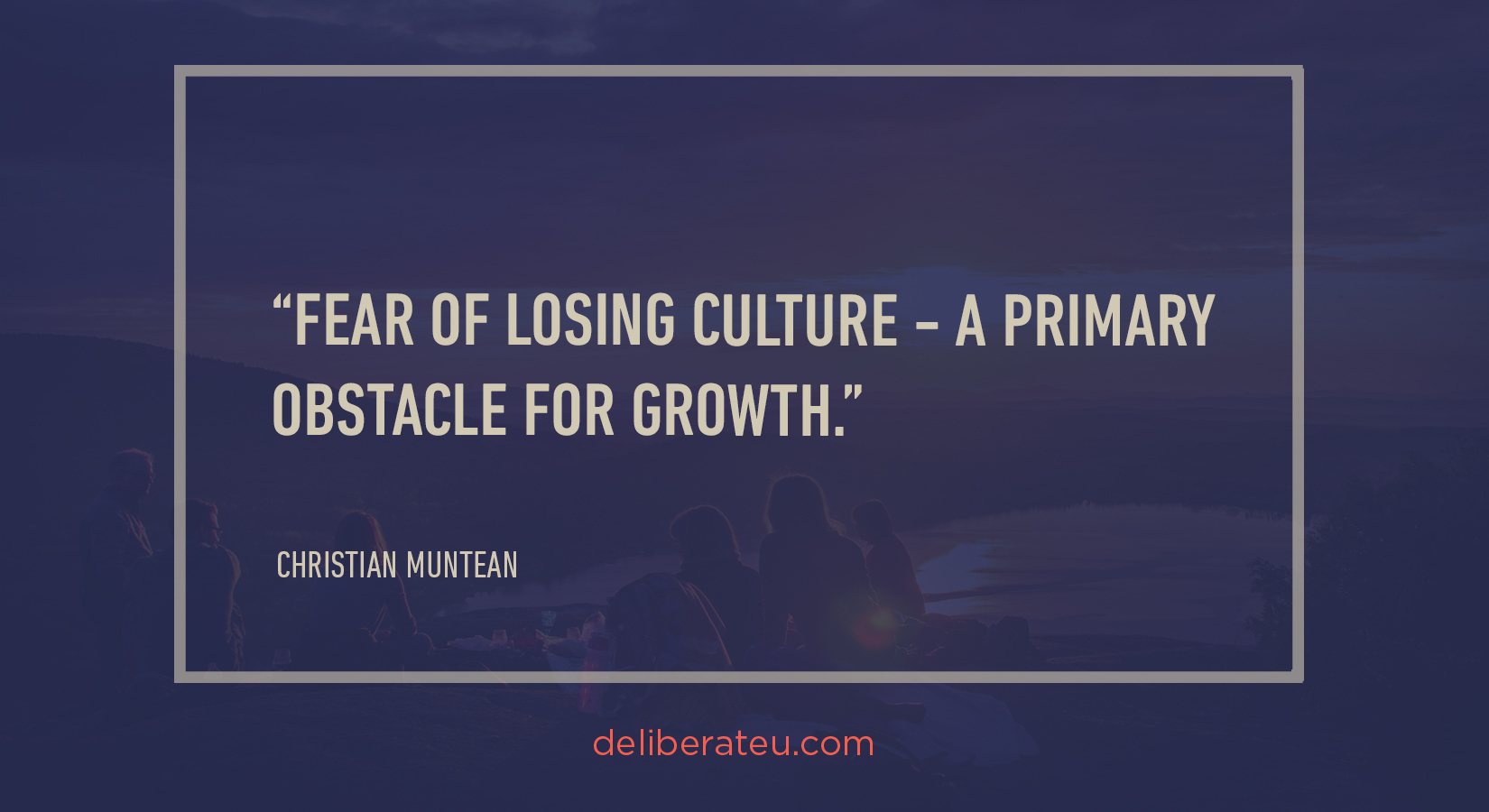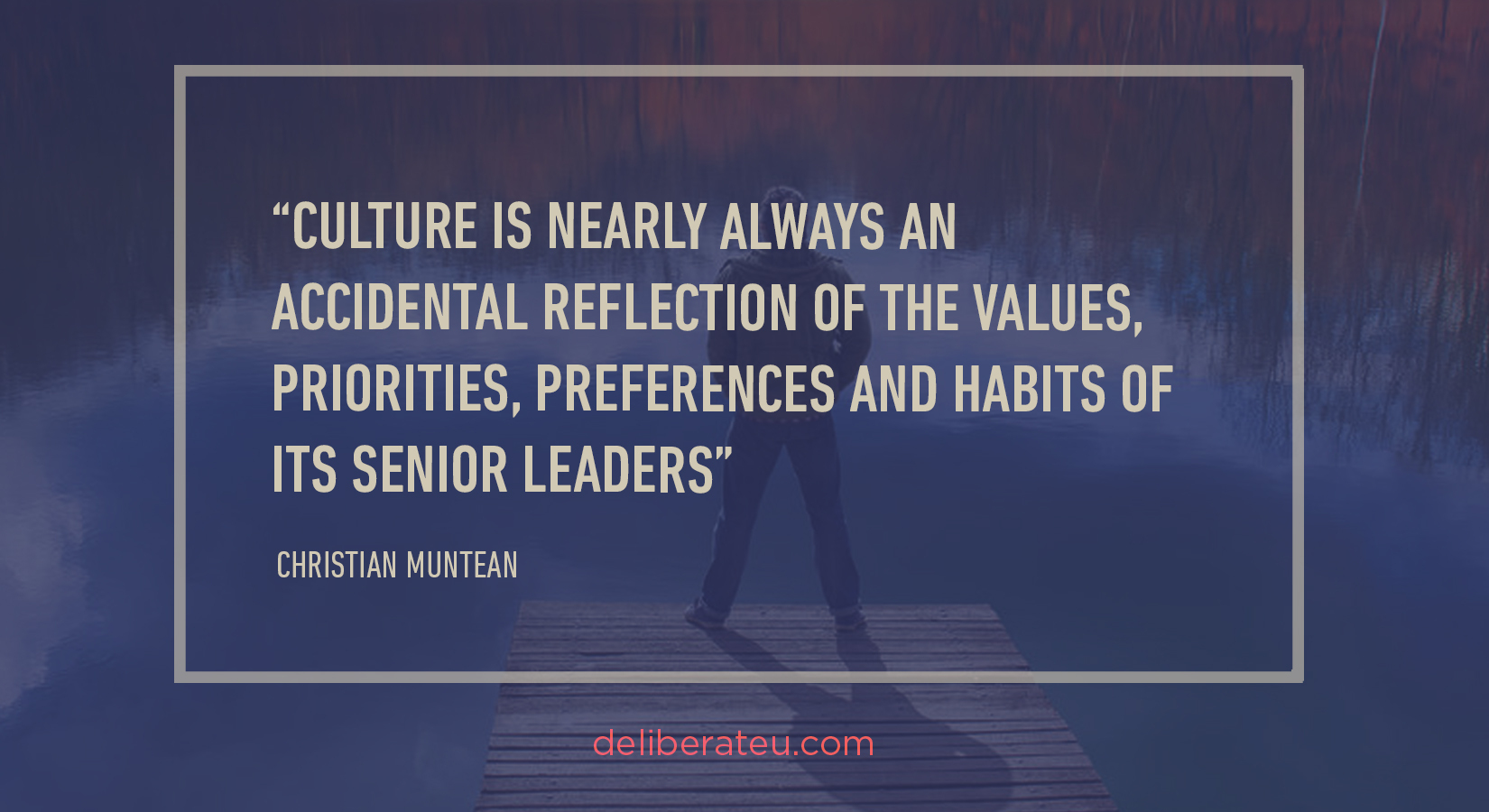The following blog is the 9th in a series on "Leadership of People and Culture". This contribution comes from a blog posting by Christian Muntean.
"I didn't start this business to be in a corporation." I was talking to one of the partners of a $250m company. They had over 200 employees and were feeling growing pains. We had just ridden down the elevator from their high-level floor in a plush office tower.

The neighborhood was elite, filled with internationally known brands. Some of the world's wealthiest individuals did their business on this street. They were small fish in a big pond. But they were thriving in this pond. And, while the New York Stock Exchange probably won't be part of their future—their days as a "mom and pop" were in the unrecognizable past.
"What is it about corporations that you don't like?" I asked, knowing he probably wasn't referencing their tax and business structure. "I don't like all the rules. I don't want to have to wear shirts and ties. I like our culture. It won't be fun anymore." The truth was, he was already not having fun. The friction created by the lack of organization and coordination within the company had been growing. It had become personalized, and the partners weren't getting along.
The real issue is that he liked doing what he wanted. When they were small, he was able to do that. And he had been successful. The problem is, the success that he had played a part in building had grown larger than him. What got him here wasn't going to get him there. Not only was the company at risk of stalling out, but it was also at risk of fracturing under its own weight.
He thought he had to trade the soul of the company for growth (he doesn't). So, he fought back.

When an organization is positioning for growth (or belatedly recognizing that they have already grown), they often are surprised to find resistance from within. Sometimes from leadership. Sometimes from employees. Sometimes from everybody. The resistance is often based on a fear of losing their culture. Losing their identity. Losing that sweet essence that makes them special.
Every company builds its own culture. But very few do so intentionally. When most companies start, they are small. Everyone knows each other. Everyone goes through the ups and downs together. And then growth happens. At first, this might be exciting. And then it becomes scary.
What's going on? Culture is nearly always an accidental reflection of the values, priorities, preferences, and habits of its senior leaders. Most leaders don't spend a lot of time thinking about these. They also don't spend time thinking about how others see and are influenced by them. But over time, a culture develops. One that is a reflection of or in reaction to the most dominant leaders.

Let's say these leaders build a great culture where people feel cared about, inspired, free to innovate and problem-solve and go the extra mile for each of their customers. In most cases, these same leaders would struggle to articulate what exactly it was that they did to create this culture. With growth or change, they often won't know what to focus on to protect their culture. This creates confusion, hesitancy, and resistance. But it doesn't have to.
- Clarify core values:
Culture is a behavioral expression of shared core values. Clarify those values. It'll help you attract people who share those values. Shared values help align decision-making, policies, and behaviors across the company.
Shared values are a big part of what gives a company its "special sauce." If an organization had a soul, it would be the shared values and the stories behind them.
- Embrace the transition from informal to formal:
One of the challenges for small organizations is that everything is informal. As things become formalized, especially if using boilerplate HR manuals, safety processes, financial management practices, and so on—it feels lifeless and bureaucratic.
Don't build structure merely as a management tool or risk-avoidance strategy. Intentionally build structure that helps manifest or project your values (your culture) throughout your organization.
- Hire leaders who get it:
Formal or informal—culture comes from leaders. Rigorously hire leaders who get your values and culture. Don't rush through this or skip it.
To some degree, you can train your staff into your values and culture. But your leaders should already be aligned when they join you. For them, your organization should feel like "coming home." For you, they should feel like "long-lost family."

- Create memorable moments & traditions:
Aside from basic training, the military boot camp experience is a shared initiation or orientation experience into the military. Shared experiences like this provide common cultural touchstones. Everyone has their own unique but similar story.
Regular corporate traditions provide a similar dynamic. These might be retreats or traditions that surround times of the year or promotions or accomplished goals. Create experiences, moments, and traditions that support shared stories.
- "See" people. Create systems to help remember and recognize individual life events:
I recently received a gift box from someone from whom I receive services. It was for my birthday. It was completely unexpected. I don't recall telling him about my birthday. But he must have systematized that somewhere—and his staff was trained to follow through.
One of the big frustrations for people in a growing company is going from a first-name basis with everyone in the company to being given an employee number and restricted access to people you used to see every day. It's depersonalizing. It causes people to feel like cogs in the machine. Find ways to remember birthdays and meaningful events – such as weddings, or funerals, or welcoming a new child.
- Rewards and acknowledgments:
Similar to seeing people – receiving recognition for a job well done or for "above and beyond" efforts is important. Surprisingly to some, good structure actually can make this a more personal process.
In larger organizations, there is a tendency to just recognize the most visible people. Or the people who most quickly come to the front of a leader's mind. However, if there is a structure to help ensure that no one is missed or forgotten, it helps prevent the development of a perceived "in-group" and "out-group."
- Full circle communication:
An open-door policy doesn't mean anything if no one walks through it. Usually (not always), leaders understand they need to communicate to their teams. But teams also need a way to communicate back up to leaders.
Create pathways for this communication. Especially create pathways that work for the different kinds of personality types, cultural backgrounds, and confidence levels in your organization. There may be enormously valuable feedback inside someone who is shy or feels hesitant. Make it easy for everyone to communicate up.
Your culture is important. You've built something special. Neither growth nor change has to be a threat. Follow the steps described above and you'll be able to protect your sense of "you" while you grow.

